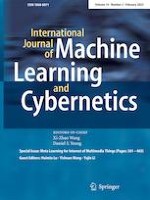05-10-2022 | Original Article
TSFNFS: two-stage-fuzzy-neighborhood feature selection with binary whale optimization algorithm
Published in: International Journal of Machine Learning and Cybernetics | Issue 2/2023
Log inActivate our intelligent search to find suitable subject content or patents.
Select sections of text to find matching patents with Artificial Intelligence. powered by
Select sections of text to find additional relevant content using AI-assisted search. powered by
